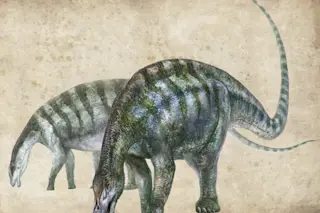Lingwulong shenqi, a new dinosaur known from the fossils of multiple individuals, is a Jurassic surprise. It's significantly older than other dinosaurs of its kind and is the earliest example found in China, challenging conventional ideas about the timing and spread of the four-legged plant-eaters. (Credit: Zhang Zongda)Lingwulong shenqi, a newly described, 174-million-year-old dinosaur, is more than just another giant herbivore to add to the fossil record. Its age and location are unexpected, and upset notions about dino diversity and distribution during the Jurassic Period. Lingwulong's name translates as "the amazing dragon of Lingwu," the region in northwestern China where multiple specimens have been excavated over the past 13 years. I'll be honest with you: If your idea of an amazing dragon is based on "Game of Thrones," you're going to be disappointed. No swooping into battle at the head of the Dothraki horde or obliterating an 8,000-year-old wall of ...
Meet Lingwulong, The "Amazing Dragon"
Discover the surprising Lingwulong shenqi dinosaur, reshaping our understanding of Jurassic Period dinosaur evolution in East Asia.
More on Discover
Stay Curious
SubscribeTo The Magazine
Save up to 40% off the cover price when you subscribe to Discover magazine.
Subscribe













